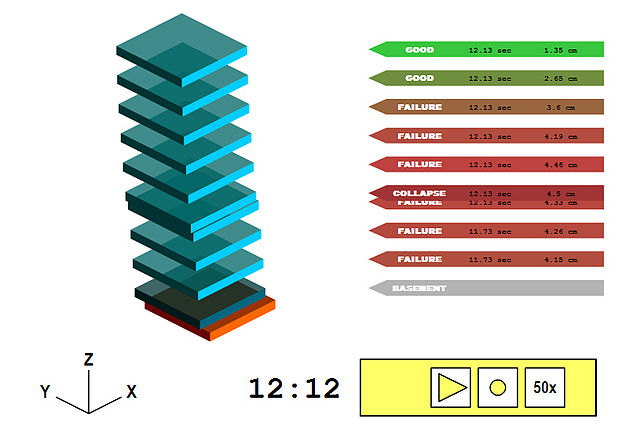Earthquake performance simulation
From Wikipedia, the free encyclopedia
Remove ads
Earthquake performance simulation is meant to study effect of earthquakes on building structures and is a practical way of seeing a thing to happen without it actually taking place in the same way.

Physical earthquake performance simulation

The best way to do it is to put the structure on a shake-table that simulates the seismic loads and watch what may happen next (if you have no time to stand out in the field and wait for a real earthquake to strike, of course). The earliest experiments like this were performed more than a century ago.[1]
Computational earthquake performance simulation
Another way is to evaluate the earthquake performance analytically. The very first earthquake simulations were performed by statically applying some horizontal inertia forces, based on scaled peak ground accelerations, to a mathematical model of a building.[2] With the further development of computational technologies, statics approaches began to give way to dynamics ones.[3]
References
Other websites
Wikiwand - on
Seamless Wikipedia browsing. On steroids.
Remove ads
